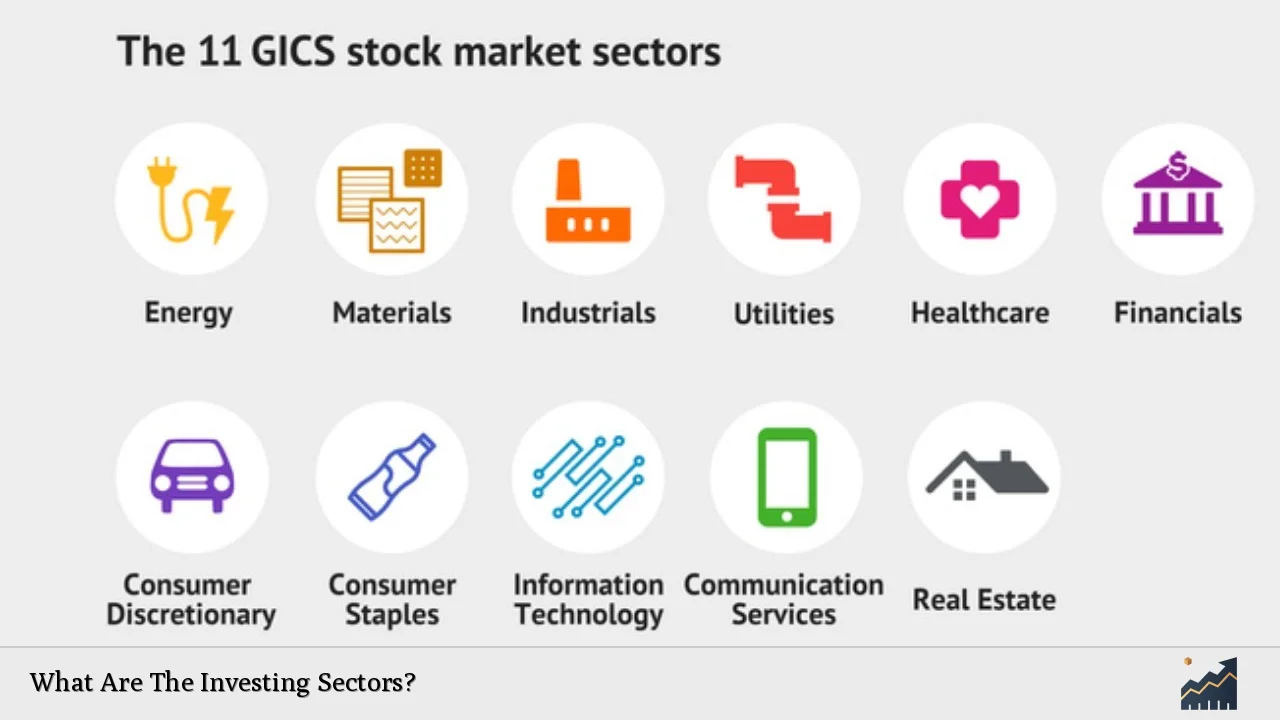Investing sectors are categories that group companies based on their business activities and economic functions. Understanding these sectors is crucial for investors as it helps in analyzing market trends, assessing performance, and making informed investment decisions. The stock market is typically divided into 11 main sectors, each with unique characteristics and opportunities. These sectors include Energy, Financials, Healthcare, Information Technology, Consumer Discretionary, Consumer Staples, Materials, Communication Services, Industrials, Utilities, and Real Estate.
Investors often use sector investing to enhance diversification within their portfolios or to capitalize on specific market trends. By investing across different sectors, individuals can mitigate risks associated with economic fluctuations and sector-specific downturns. This strategic approach allows investors to align their investments with broader economic indicators and consumer behaviors.
| Sectors | Description |
|---|---|
| Energy | Includes companies involved in the exploration and production of energy resources. |
| Financials | Comprises banks, insurance companies, and other financial services. |
| Healthcare | Encompasses pharmaceuticals, biotechnology, and healthcare providers. |
| Information Technology | Covers software, hardware, and IT services. |
| Consumer Discretionary | Includes goods and services that consumers want but do not need. |
| Consumer Staples | Consists of essential products like food and household items. |
| Materials | Involves companies that produce raw materials for manufacturing. |
| Communication Services | Includes telecommunications and media companies. |
| Industrials | Covers manufacturing and distribution of capital goods. |
| Utilities | Involves electric, gas, and water utilities. |
| Real Estate | Comprises companies that own or manage real estate properties. |
Overview of Each Sector
Understanding the specifics of each sector aids investors in making informed decisions. Each sector has distinct characteristics that influence its performance in various economic conditions.
Energy Sector
The Energy sector includes companies engaged in the exploration, extraction, refining, and distribution of energy resources. This sector is pivotal as it encompasses oil, gas, renewable energy sources, and utilities providing power. Investors are drawn to this sector due to its potential for high returns during periods of rising energy prices. However, it is also subject to volatility influenced by geopolitical events and changes in regulatory policies.
- Companies involved: Oil producers, renewable energy firms
- Key risks: Price fluctuations in oil and gas markets
Financials Sector
The Financials sector encompasses a broad range of financial services including banking, insurance, investment funds, and real estate investment trusts (REITs). This sector plays a critical role in the economy by facilitating capital flow and providing financial stability. Investors often look at this sector for its potential returns during economic growth periods when lending increases.
- Companies involved: Banks, insurance firms
- Key risks: Economic downturns affecting loan defaults
Healthcare Sector
The Healthcare sector consists of companies that provide medical services, manufacture medical equipment or drugs, and engage in biotechnology research. This sector is often viewed as a defensive investment because healthcare demand tends to remain stable regardless of economic conditions. Investors are particularly interested in biotech firms with innovative drug pipelines.
- Companies involved: Pharmaceutical companies, hospitals
- Key risks: Regulatory changes impacting drug approvals
Information Technology Sector
The Information Technology sector includes businesses that produce software, hardware, and IT services. This sector has been one of the fastest-growing segments due to the increasing reliance on technology across all industries. While it offers substantial growth potential, it can also be volatile due to rapid innovation cycles.
- Companies involved: Software developers, hardware manufacturers
- Key risks: Rapid technological changes affecting product relevance
Consumer Discretionary Sector
The Consumer Discretionary sector comprises businesses that sell non-essential goods and services such as luxury items and entertainment. This sector’s performance is closely tied to consumer spending patterns; thus it tends to thrive during economic expansions but can suffer during recessions.
- Companies involved: Retailers, automotive manufacturers
- Key risks: Economic downturns leading to reduced consumer spending
Consumer Staples Sector
The Consumer Staples sector includes companies that produce essential products such as food, beverages, household goods, and personal care items. This sector is considered stable since demand for these products remains consistent even during economic downturns.
- Companies involved: Grocery stores, food manufacturers
- Key risks: Price competition affecting profit margins
Materials Sector
The Materials sector involves companies that extract or process raw materials used in manufacturing products. This includes industries such as mining, metals production, and chemicals. The performance of this sector is often linked to global economic conditions since demand for materials fluctuates with industrial production levels.
- Companies involved: Mining firms, chemical manufacturers
- Key risks: Commodity price volatility impacting profitability
Communication Services Sector
The Communication Services sector encompasses companies that provide communication services through various media channels including telecom services and entertainment content providers. This sector has seen significant growth with the rise of digital media consumption.
- Companies involved: Telecom providers, media companies
- Key risks: Regulatory changes affecting service delivery
Industrials Sector
The Industrials sector includes a diverse range of industries such as aerospace & defense manufacturing, construction services, and transportation logistics. This sector is heavily influenced by economic cycles; hence its performance can vary significantly based on overall economic health.
- Companies involved: Construction firms, logistics providers
- Key risks: Economic downturns leading to reduced infrastructure spending
Utilities Sector
The Utilities sector consists of companies providing essential services like electricity, gas, water supply, and waste management. This sector is generally considered defensive due to its stable demand; however, it can be impacted by regulatory changes regarding energy pricing.
- Companies involved: Electric power suppliers
- Key risks: Regulatory changes affecting operational costs
Real Estate Sector
The Real Estate sector primarily involves companies engaged in property management or real estate investment trusts (REITs). Investing in this sector can provide income through rental yields as well as capital appreciation from property value increases.
- Companies involved: REITs managing commercial properties
- Key risks: Market fluctuations affecting property values
Benefits of Sector Investing
Investing across various sectors offers several advantages:
- Diversification: By spreading investments across different sectors, investors can reduce risk.
- Targeted Exposure: Investors can capitalize on specific trends within sectors they believe will perform well.
- Risk Management: Certain sectors may perform better during specific economic conditions (e.g., defensive sectors during recessions).
Challenges of Sector Investing
While there are benefits to investing by sectors:
- Volatility: Some sectors can be more volatile than others; for instance, technology stocks may experience rapid price swings.
- Economic Sensitivity: Investments in cyclical sectors (like consumer discretionary) may suffer during economic downturns.
- Concentration Risk: Over-investing in a single sector can lead to significant losses if that sector underperforms.
Conclusion
Understanding investing sectors is essential for any investor looking to navigate the complexities of the stock market effectively. Each sector offers unique opportunities and challenges that can significantly impact portfolio performance. By strategically investing across multiple sectors based on market trends and personal risk tolerance levels, investors can enhance their chances for success while managing potential downsides effectively.
FAQs About Investing Sectors
- What are the main investing sectors?
The main investing sectors include Energy, Financials, Healthcare, Information Technology, Consumer Discretionary, Consumer Staples, Materials, Communication Services, Industrials, Utilities, and Real Estate. - Why is understanding sectors important for investors?
Understanding sectors helps investors analyze market trends and make informed decisions about where to allocate their resources effectively. - How do I choose which sectors to invest in?
Investors should consider current economic conditions and personal risk tolerance when selecting sectors for investment. - What is the most stable investing sector?
The Consumer Staples and Utilities sectors are generally considered the most stable due to consistent demand for essential goods and services. - Can I invest in multiple sectors simultaneously?
Yes! Diversifying investments across multiple sectors can help reduce risk while maximizing potential returns.

